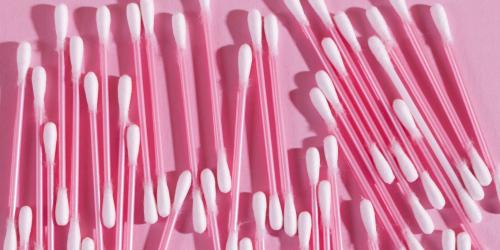A healthy painting, what is it?
A natural paint contains no hydrocarbons , glycol ethers , cadmium , chromium, volatile organic compounds or VOCs, these solvents are used as binders and evaporate when the paint dries. Binders of natural paint are made from vegetable oils (linseed, castor oil, rosemary, lavender), beeswax , natural resins (pine), casein and chalk . Its solvents are based on essential oils . And its pigments are vegetal (valerian, tea, etc.) or mineral (Sienna, iron oxides, etc.). Non-polluting, these paints still include, as well, a small risk of allergic reaction in some people who may be predisposed.
What to watch on the label?
Only natural paints display all of their ingredients . It's a clue. On the others, it looks for the presence of white spirit, glycol ethers or cadmium. If any of these three substances are cited, we do not take.
Can I trust the NF Environnement label?
The NF Environment or European Ecolabel labels guarantee the absence of the most harmful lead , arsenic and glycol ethers . They also attest to a reduced VOC rate. For example, a matte or satin wall paint with the NF Environnement label has less than 100 g / l of VOC (less than 30 g / l with the European Ecolabel). But they do not guarantee the 100% natural.
Is it more complicated to apply?
It all depends on the layer already in place. If there was a glycerol previously, it must be sanded completely, then apply a universal undercoat made from natural products (such as pine gemstone, linseed oil, chalk ...). Then, prepare your natural paint by making your own mixture of pigments . Depending on whether you are painting with water or oil, the pigments must be covered with water (for 2 hours) or citrus essence (instant mix). It only remains to incorporate the thick syrup thus obtained in the paint (5 min), before spreading it with a very thick roll or with a brush if one looks for effects of style. The paint dries in a few hours to the touch. It must be well ventilated for quality drying. Finally, as the monolayers do not exist in natural version, it is necessary to pass the second layer 8 h after for a painting with water and 24 h after for an oil painting.
Side smell, what gives?
Natural oil paints smell of citrus or plant essences . However, you should know that in classic paints the absence of smell is not necessarily a guarantee of safety! Thus, pots that display "odorless" have many irritating compounds, but their emanations are odorless for humans! They have nothing to do with natural water paints, which have no odor or toxic components.
Is rendering different?
The choice of colors is less wide with natural paints ready for use than with conventional paints, but one can always manage with pigments to obtain the desired shade. Side texture, there is also matte, satin and gloss. A similar color and texture, the rendering is almost the same.
Can we wash it or not?
Natural paint is not washable . However, as it is microporous, it lets the moisture out without holding it and therefore suffers less than a classic painting of the harmful effects of moisture. As proof, it can be used in the kitchen or in the bathroom.
Does it age well?
The paintings and frescoes of past centuries have all been made with natural paints, but many have gone through the decades brilliantly. As they permeate the support in depth, they do not flake.
Can we paint on all media?
There are natural paints for cement , plaster , placo , wallpaper , wood , non-galvanized metals, PVC and, of course, for walls and ceilings. The ingredients may change according to use: for example, a potato painting is used instead to cover raw wood or brick, while a lime paint is preferred to cover a plaster wall.
Is it really more expensive?
White is the least expensive because it is especially the pigments that make the difference. Natural bright colors cost as much as good quality classic paints.
Where to find natural paints?
The simplest such as lime paints are now available in do-it-yourself superstores. Organic stores such as Biocoop also have pots on the shelves. We finally find some specialized shops like "Well-being and materials" in Ivry ( www.bienetremateriaux.com ).
On the Net: www.eco-logis.com
We do it ourselves!
With lime
For wood, plaster wall
For 5 l: 4 l of skim milk, 500 g of slaked lime (or natural hydraulic lime, radius materials brico stores), 1/2 l of linseed oil, 4 kg of white Meudon or Spain (radius cement), 100 g maximum of pigments (fine art department brico signs or organic stores)
Mix the lime with the white, add the linseed oil, then the milk and the pigment last. Twist to prevent sedimentation.
A potato
For wood, but also brick
For 10 l: 1 kg of potatoes, 2 kg of Meudon white or Spain, 200 g maximum of pigments
Cook the potatoes in water, then peel them and mix them in 4 liters of hot water, taking care to remove the lumps with a sieve. Add the soggy white in another 4 liters of water and the pigments in the very last.
The efforts of the big brands
Astral / Boiro : special mention to the world leader in painting , some of whose products ("natural whites", "tadelak" and "kitchen and bathroom") are well below the standards imposed, less than 1 g of VOC. Follow their logo!
Auchan is launching a range of paints in 58 colors bearing the European Ecolabel, VOC less than 20 g / liter gloss and 10 g / liter satin and matte, from € 5.70 for 0.5 liter. Such. : 0 810 28 24 26.
Ripolin offers a "green line" with the NF Environnement label and a low VOC content (less than 1 g / liter). Rens. : www.ripolin.tm.fr
And find the subject: Which painting for which piece on the site of Marieclairemaison.com


